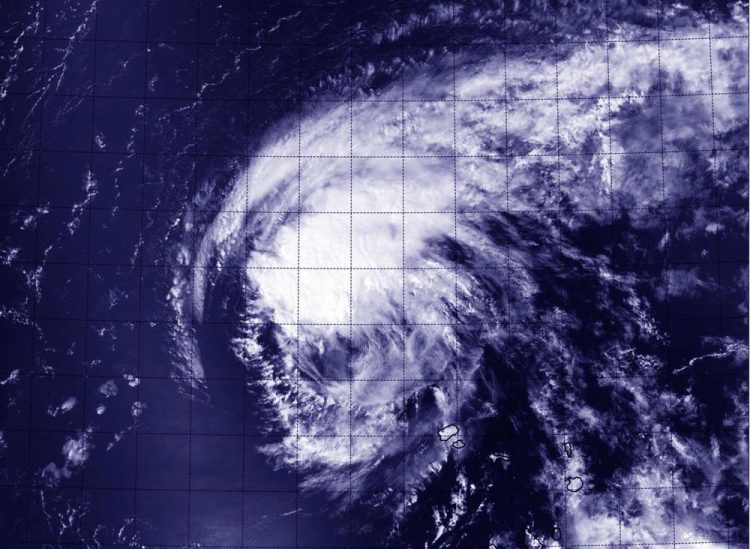NASA-NOAA satellite shows fred facing a fizzling future

This visible image from NASA-NOAA's Suomi NPP satellite shows thunderstorms diminishing in Tropical Storm Fred on Sept. 1 at 11:04 a.m. EDT. Credits: NASA/NOAA/NRL
Fred continues to quickly weaken. The strongest thunderstorms near the center of the storm decreased in coverage and have become less organized in visible imagery from the Visible Infrared Imaging Radiometer Suite (VIIRS) instrument aboard NASA-NOAA's Suomi NPP satellite. Suomi NPP flew over Fred on September 1 at 11:04 a.m. EDT.
At 11 a.m. EDT (1500 UTC) on September 1, the center of Tropical Storm Fred was located near latitude 18.3 North, longitude 27.0 West. That's about 255 miles (410 km) northwest of the Cape Verde Islands.
Maximum sustained winds have decreased to near 50 mph (85 kph), and the National Hurricane Center (NHC) expects additional weakening during the next 48 hours, and Fred is forecast to become a tropical depression by late Wednesday, September 2. The estimated minimum central pressure is 1003 millibars.
Fred was moving toward the west-northwest near 10 mph (17 kph), and this general motion is expected to continue during the next couple of days.
Fred faces more factors that will make it fizzle over the next several days. The tropical storm is expected to move into an area with increasing southwesterly wind shear (winds that can tear a tropical cyclone apart), some dry air in the mid-levels of the atmosphere, and cooler sea surface temperatures. All of those factors will help weaken the now weaker tropical storm.
The NHC noted that Fred is expected to weaken to a tropical depression in 36 to 48 hours (by September 3) and become a remnant low in 2 to 3 days, but this could occur sooner.
Media Contact
All latest news from the category: Earth Sciences
Earth Sciences (also referred to as Geosciences), which deals with basic issues surrounding our planet, plays a vital role in the area of energy and raw materials supply.
Earth Sciences comprises subjects such as geology, geography, geological informatics, paleontology, mineralogy, petrography, crystallography, geophysics, geodesy, glaciology, cartography, photogrammetry, meteorology and seismology, early-warning systems, earthquake research and polar research.
Newest articles

Economies take off with new airports
A global study by an SUTD researcher in collaboration with scientists from Japan explores the economic benefits of airport investment in emerging economies using nighttime satellite imagery. Be it for…

CAR T–cell immunotherapy targets
Pan-cancer analysis uncovers a new class of promising CAR T–cell immunotherapy targets. Scientists at St. Jude Children’s Research Hospital found 156 potential CAR targets across the brain and solid tumors,…

Stony coral tissue loss disease
… is shifting the ecological balance of Caribbean reefs. The outbreak of a deadly disease called stony coral tissue loss disease is destroying susceptible species of coral in the Caribbean…





















